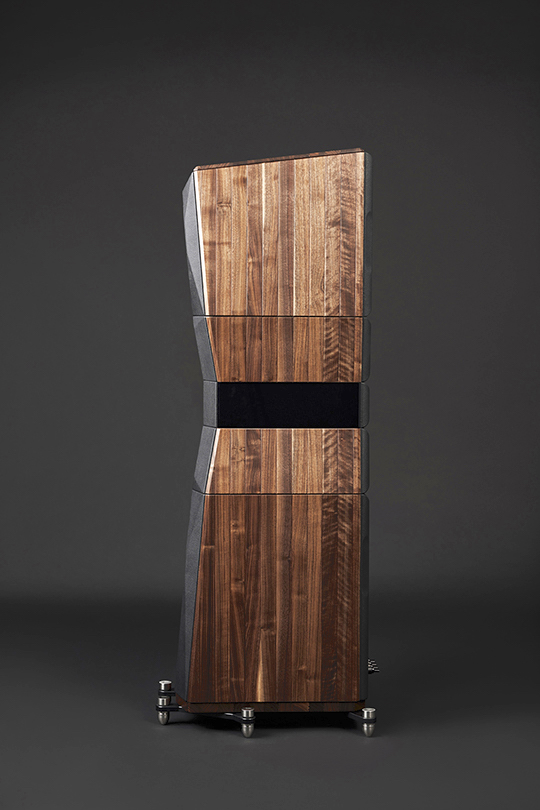
Perhaps the most startling example of this spatial fluency is Shawn Colvin’s Cover Girl (Columbia 477240 2). As the name suggests, each track is a cover, often featuring a different location and cast of characters, a mix of studio and live recordings. But few contrasts are as stark as that between tracks two and three. ‘(Looking For) The Heart Of Saturday Night’ is captured live, part of a solo gig at The Bottom Line that provides several tracks for the album. Colvin appears, isolated in a spacious, slightly hollow space, her guitar displaced low and left by its separate mic. The acoustic adds a hollowness to her voice, while the upper registers clearly define the height and width of the stage, the space behind her. ‘One Cool Remove’ follows immediately, a gorgeous, fulsome, intimate studio recording, a full band arrangement with duet and harmony vocals shared with Mary Chapin Carpenter. Each voice has its own distinct location, character and natural harmonic identity. Each is a solid, dimensional, credible, breathing presence, their separation as effective tonally as it is spatially: just as the band expands to fill the available space, a space that’s a constant, whether the focus is on the voices and their subtle interplay, or soaring into the power and density of the chorus. The voices don’t swell with volume, the studio space doesn’t expand as it fills with musical energy. Instead the energy level gains intensity and power as the arrangement calls on more instruments and more level.
What the Dragon Legacy does with an uncannily natural ease is to scale the performance – in every sense of that word. It gives you an unwavering sense of, if not the original acoustic space in which the music happened, then as much of that space as the recording captured. It doesn’t add or embellish, but it does hold that space stable, so that the physical environment is a constant, whether it contains a solo violin or the entire St. Petersburg Philharmonic, a lead vocal with a whispered counterpoint or a full session band. As the music gains level, power or complexity, that shift is contained and concentrated within that established space, adding focus and intensity to the performance. When the musicians scale the heights, be that a soaring vocal or a massive crescendo, the Dragon Legacies don’t do what so many speaker do, growing and swelling with the music: The space, the presentation, the acoustic remains stable and constant. Instead, the speakers help the music reach the full extent of that peak, driving the performers’ energy into the recorded space, into the listening room, maintaining the scale of the space, but matching the musical scale of the performance. This is about more than simply delivering impressive dynamic range. By combining that capability (at both ends of the scale) with a rock-like spatial consistency, the stability imparted adds presence, power and temporal integrity to the performance: an integrity that makes for a deeper involvement and a much more convincing experience.
Music matters…
While it’s another audio tradition to sub-divide and dissect a speaker’s performance, dwelling over the specifics of bass, treble, colouration and a host of other specific qualities, in this case it’s rather missing the point. There are few multi-way, moving-coil speakers in my experience that are as coherent and well balanced as the Dragon Legacy. The Stenheims are one possible example, but even the U2 doesn’t possess the bottom-end extension, weight and power of these Peak speakers. Given that – and the use of a fabric dome tweeter – one of the few weaknesses in the Dragon Legacy’s overall balance is a slight loss of extension and air at the top-end, reflected in its warm and intimate presentation, as opposed to stark immediacy – although I suspect that’s a compromise many a listener will be happy to make. In theory, adding extension shouldn’t present that much of a problem, with any number of diamond or beryllium domes, ribbons or AMTs lining up for consideration. But the question isn’t one of cost, at least not in terms of the BOM. The cost here would likely be measured in musical terms, risking a loss of the overall coherence, seamless integration and tonal and harmonic consistency that contribute so much to the Dragon Legacy’s holistic nature. Like any loudspeaker, its performance depends on all the different parts of the design working in concert. The Peak’s ensemble capabilities put it on a par with the best bands, the best orchestras, on their best days. Which is why the speakers can deliver exactly that, accessing and energising Shoji and the St. Petersburg, Barbirolli and the Hallé, Patti Smith or Talking Heads.

